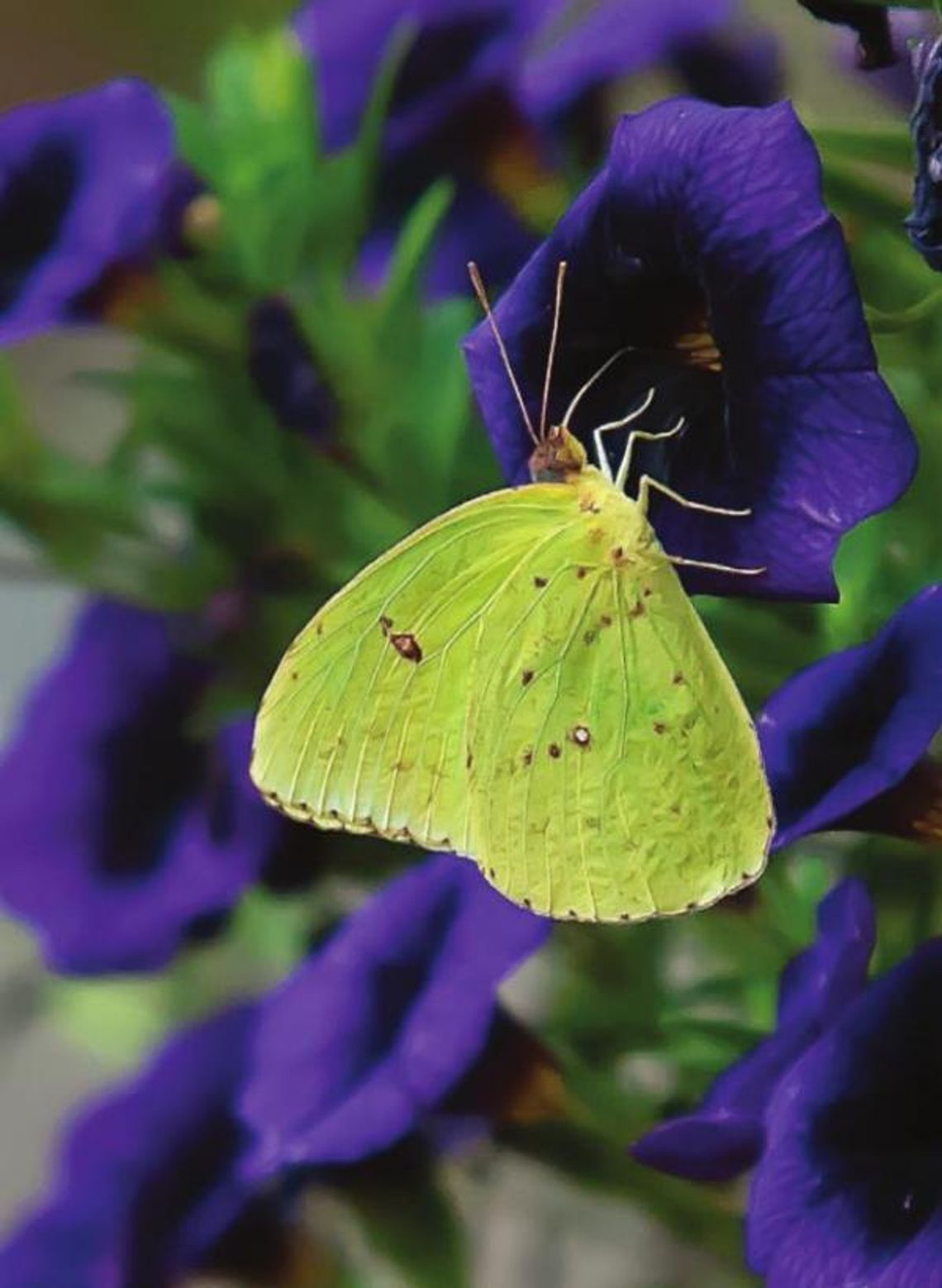Today, which as I write is April 3rd, and the day the Ruby-throated hummingbirds returned to my house. Oddly it was a feast of the Superbells calibrachoas. This story, however, starts the first week of October which is when I planted them.
I’ve been touting this for zone 8 and warmer for a couple of years. To be honest after what I have seen I would definitely try in Zone 7 too. The problem however lies in the producer, the garden center and then in a large part you the gardener. In other words. Are you a believer?
I plant in October for Supertunia petunias too, but for the sake of this column I am sticking with Superbells calibrachoas. My first butterfly of 2022 was January 9, it was a large pristine Cloudless Sulphur, on Superbells Grape Punch.
The winter turned pretty cold for a few weeks, a few 23-degree mornings and a boatload of days in the mid and upper 20’s. There was really no problem and we entered a really warm period kicking everything into a state of growth and blooms.
Spring had sprung so to speak and we found ourselves with blooming azaleas, loropetalums, flowering quince and camellias of course. The long-range forecast was looking favorable and then suddenly, well you can guess. The forecast seemed to drop on a daily basis predicting really cold temperatures for the morning of March 13 and a freeze on the 14th. I suppose it depends on whose thermometer you use but at my house it was 21 with others close by hitting 20-degrees.
I was speaking at the Dirt Friends Festival in El Dorado Arkansas that weekend and was helpless to try and protect. I did enjoy their episode of Winter, acting like a kid taking pictures and videos of the snowstorm in their art district. It was beautiful.
I was expecting the worst when I returned home and sure enough, the azalea blossoms were toast. When I looked in the backyard, ‘The Garden Guy’s’ paradise, the Superbells and Superbena verbenas were still blooming profusely. The Supertunias which had been budding up, suffered no damage either.
So, this brings me to now, April 3. The three Ruby-hummingbirds I had today flew back and forth feasting on Superbells Pomegranate Punch, Grape Punch, Dreamsicle, and Yellow. These flowers are so extraordinarily colorful they bring joy but add hummingbirds and swallowtails and you may start to do the garden happy dance or in my case I grab the camera.
Superbells will get about 12-inches tall with a 24-inch spread and packed with an extra-long season of enormous blooming potential. While I have had good luck growing them in raised beds rich in organic matter their best performance will always be in containers with good sunlight. These that survived my cold winter were all in containers.
Be creative designing your mixed containers whether they be baskets, window boxes, bowls, urns or extravagant clay pots like olive jars. This is also the time to use the best potting soil, nothing heavy with clay soil from the garden.
Since the Superbells calibrachoas are such prolific bloomers, they are counting on us as gardeners to keep them fed. During the warm growing season most of us water on a daily regimen which will leach out the nutrients. You can use controlled release granules per your formula recommendation but don’t be afraid to use a-dilute water-soluble fertilizer at least once a week like most of the commercial landscapers.
There are now 38-choices of Superbells for you to choose from. Even though my October planted Superbells are in full bloom, I am looking for some of the ones I have never grown like Black Currant Punch and Superbells Prism Pink Lemonade. I urge you to go to the Proven Winners website and see which colors, patterns, and even doubles might appeal to you. Get yours planted soon for the long growing season ahead. Follow me on Facebook @NormanWinterTheGardenGuy for more photos and garden inspiration.
.png)












